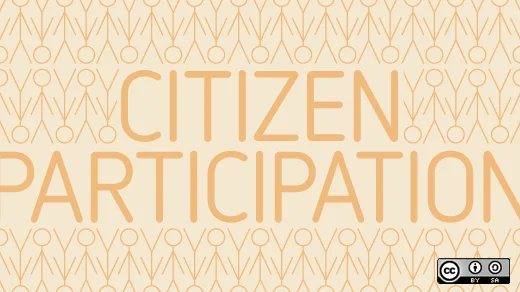In the months leading up to political elections, public debate intensifies and citizens are exposed to a proliferation of information around policy options. In a data-driven society where new insights have been informing decision-making, a deeper understanding of this information has never been more important, yet the public still hasn't realized the full potential of public policy modeling.
At a time where the concept of "open government" is constantly evolving to keep pace with new technological advances, government policy models and analysis could be the new generation of open knowledge.
Government Open Source Models (GOSMs) refer to the idea that government-developed models, whose purpose is to design and evaluate policy, are freely available to everyone to use, distribute, and modify without restrictions. The community could potentially improve the quality, reliability, and accuracy of policy modeling, creating new data-driven apps that benefit the public.
Today's generation interacts with technology like it's second nature, absorbing vast amounts of information tacitly. What if we could interact with different public policies in a virtual, immersive environment using a GOSM?
Imagine an app that allows citizens to test drive proposed policies to determine the future in which they want to live. They would instinctively learn the key drivers and what to expect. Before long the public would have a deeper understanding of public policy impacts and become more savvy at navigating the controversial terrains of public debate.
Why haven't we had greater access to these models before? The reason lies behind the veils of public policy modeling.
In a society as complex as the one we live in, quantifying policy impacts is a difficult task and has been described as a "fine-art." Moreover, most government policy models are based on administrative and other privately held data. Nevertheless, policy analysts valiantly go about their quest with the aim of guiding policy design, and many a political battle has been won with a quantitative call to arms.
Numbers are powerful. They build credibility and are often used as a rationale for introducing new policies. The development of public policy models lends power to both politicians and bureaucrats, who may be reluctant to disrupt the status quo. Giving that up may not be easy, but GOSMs provide an opportunity for unprecedented public policy reform.
GOSMs level the playing field for everyone: politicians, the media, lobby groups, stakeholders, and the general public. By opening the doors of policy evaluation to the community, governments can tap into new and undiscovered capabilities for creativity, innovation, and efficiency within the public sphere. But what are the practical implications for the strategic interactions between stakeholders and governments in public policy design?
GOSMs are unique because they are primarily a tool for designing public policy and do not necessarily require re-distribution for private gains. Stakeholders and lobby groups could potentially employ GOSMs along with their own privately held information to gain new insights into the workings of the policy environment in which they are economic players for private benefit.
Could GOSMs become a weapon where stakeholders hold the balance of power in public debate and strategize for optimal benefit?
Being a modifiable public good, GOSMs are, in notion, funded by the taxpayer and attributed to the state. Would it be ethically appropriate for private entities to gain from GOSMs without passing on the benefits to society? Unlike apps that may be used for more efficient service provision, alternate policy proposals are more likely to be used by consultancies and contribute to public debate.
The open source community has frequently used the "copyleft license" to ensure that code and any derivative works under this license remains open to everyone. This works well when the product of value is the code itself, which requires re-distribution for maximum benefit. However, what if the code or GOSM redistribution is incidental to the main product, which may be new strategic insights into the existing policy environment?
At a time when privately collected data is becoming prolific, the real value behind GOSMs may be the underlying data, which could be used to refine the models themselves. Ultimately, government is the only consumer with the authority to implement policy, and stakeholders may choose to share their modified GOSMs in negotiations.
The big challenge government has when publicly releasing policy models is increasing transparency while protecting privacy. Ideally, releasing GOSMs would require securing closed data in a way that preserves the key features of the modeling.
Publicly releasing GOSMs empower citizens by promoting a greater understanding and participation into our democracy, which would lead to improved policy outcomes and greater public satisfaction. In an open government utopia, open public policy development will be a collaborative effort between government and the community, where knowledge, data, and analysis are freely available to everyone.
Learn more in Audrey Lobo-Pulo's talk at linux.conf.au 2017 (#lca2017) in Hobart: Publicly Releasing Government Models.
Disclaimer: The views presented in this article belong to Audrey Lobo-Pulo and are not necessarily those of the Australian Government.







1 Comment